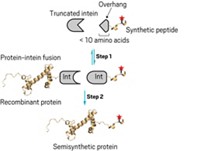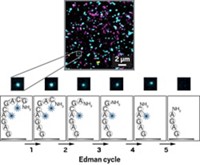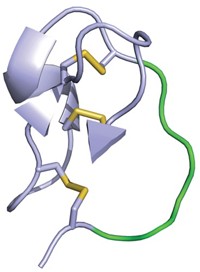Advertisement
Grab your lab coat. Let's get started
Welcome!
Welcome!
Create an account below to get 6 C&EN articles per month, receive newsletters and more - all free.
It seems this is your first time logging in online. Please enter the following information to continue.
As an ACS member you automatically get access to this site. All we need is few more details to create your reading experience.
Not you? Sign in with a different account.
Not you? Sign in with a different account.
ERROR 1
ERROR 1
ERROR 2
ERROR 2
ERROR 2
ERROR 2
ERROR 2
Password and Confirm password must match.
If you have an ACS member number, please enter it here so we can link this account to your membership. (optional)
ERROR 2
ACS values your privacy. By submitting your information, you are gaining access to C&EN and subscribing to our weekly newsletter. We use the information you provide to make your reading experience better, and we will never sell your data to third party members.
Synthesis
Cross-Linkers Target Acidic Amino Acids
Dihydrazide cross-linking reagents that target aspartic and glutamic acids provide protein structure information complementary to lysine-targeting cross-linkers
by Celia Henry Arnaud
June 23, 2014
| A version of this story appeared in
Volume 92, Issue 25
By chemically cross-linking proteins, digesting them with enzymes, and analyzing the resulting peptides with mass spectrometry, scientists generate distance information they can use in protein structure modeling. Most cross-linking chemistries currently target the primary amine in lysine’s side chain. Linking other amino acid side chains might provide additional data that improve structural models. Ruedi Aebersold and Alexander Leitner of ETH Zurich and coworkers report new dihydrazide-based chemical cross-linkers that target carboxyl groups in aspartic acid and glutamic acid (Proc. Natl. Acad. Sci. USA 2014, DOI: 10.1073/pnas.1320298111). The researchers used adipic acid dihydrazide or pimelic acid dihydrazide to cross-link eight model proteins and two multisubunit protein complexes: the TRiC chaperonin, an almost 1-megadalton complex with 16 subunits, and the 26S proteasome, a 2.5-megadalton complex with more than 60 subunits. Pimelic acid dihydrazide—the longer of the two cross-linkers—provided more extensive cross-linking coverage than did adipic acid dihydrazide.





Join the conversation
Contact the reporter
Submit a Letter to the Editor for publication
Engage with us on Twitter